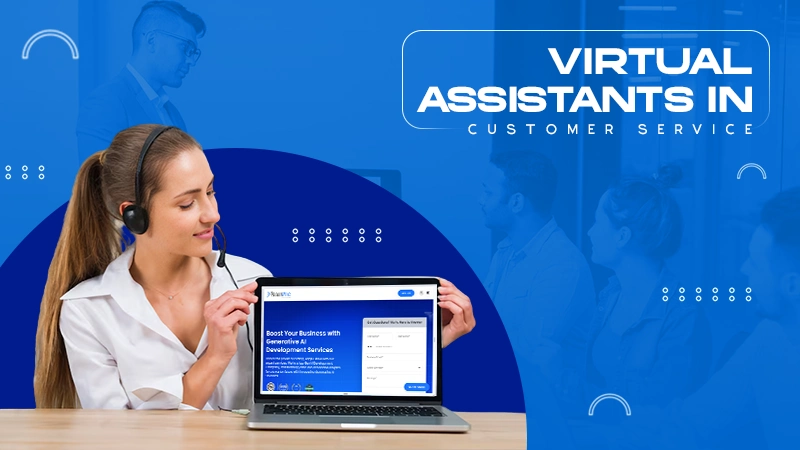How Construction Firms Can Prevent Data Loss
Construction companies lose critical business data every day, and most don’t realize it until it’s too late. Unlike other industries where data loss might mean recovering some emails or financial records, construction firms face unique challenges that can literally shut down active projects and cost hundreds of thousands of dollars.
The problem isn’t just about backing up files anymore. Modern construction operations generate massive amounts of interconnected data across multiple locations, devices, and systems that all need coordinated protection strategies.
Unique Data Loss Risks in Construction Environments
Construction firms face data vulnerability challenges that most other businesses never encounter. The combination of mobile operations, harsh environmental conditions, and distributed project teams creates a perfect storm for data loss incidents.
Job Site Environmental Hazards
Construction sites are inherently hostile to technology equipment. Your typical office backup strategy doesn’t account for:
- Weather exposure that can destroy laptops, tablets, and mobile devices instantly
- Dust and debris that infiltrates electronic equipment and causes premature failure
- Theft and vandalism of equipment left unattended on job sites
- Vehicle accidents that damage mobile offices and equipment storage areas
- Power fluctuations from temporary electrical systems that corrupt data during saves
One electrical contractor lost three months of project documentation when their job site trailer was broken into and all equipment was stolen. They hadn’t backed up the CAD files and project specifications to cloud storage, so they had to recreate everything from memory and paper copies.
Multi-Location Coordination Challenges
Construction projects typically involve teams working across multiple locations – main office, job sites, supplier facilities, and client locations. Each location creates potential data loss points:
- Communication gaps between teams that result in lost updates and duplicated work
- Version control issues when multiple people modify the same plans or schedules
- Equipment failures at remote locations where IT support isn’t immediately available
- Network connectivity problems that prevent automatic data synchronization
Project Timeline Pressures
Construction schedules are notoriously tight, which often leads to data management shortcuts that increase loss risks:
- Rushed file transfers that get interrupted or corrupted
- Skipped backup procedures when deadlines are approaching
- Informal data sharing through personal devices and unsecured channels
- Deferred system maintenance that increases equipment failure likelihood
Critical Construction Data That Needs Protection
Construction firms generate and rely on data types that require specialized protection strategies beyond standard business backup approaches.
Project Documentation and Plans
Construction projects involve massive amounts of documentation that must be preserved and accessible:
- Architectural drawings and CAD files that may represent months of design work
- Engineering specifications that contain critical safety and compliance information
- Project schedules and timelines that coordinate dozens of subcontractors and suppliers
- Permit documentation that’s required for legal project completion
- Change orders and modifications that affect project scope and billing
Financial and Contractual Information
Construction companies handle complex financial data that’s often interconnected across multiple projects:
- Bid documentation and pricing strategies for competitive proposals
- Contract terms and conditions that govern project relationships
- Payment schedules and invoicing records for cash flow management
- Cost tracking data that determines project profitability
- Insurance and bonding documentation required for project participation
Safety and Compliance Records
Construction safety documentation has legal implications that extend far beyond typical business records:
- Worker certification and training records required for job site access
- Safety inspection reports that demonstrate regulatory compliance
- Incident documentation that protects against liability claims
- Equipment maintenance records that prove safety protocol adherence
- Environmental compliance data for projects with regulatory oversight
Specialized Data Protection Strategies for Construction
Effective data protection for construction firms requires approaches that address the industry’s unique operational challenges and regulatory requirements.
Mobile-First Backup Solutions
Construction teams work primarily from mobile devices and temporary locations, so data protection strategies need to accommodate this reality:
- Automatic cloud synchronization that works regardless of location or internet quality
- Offline backup capabilities that protect data even when connectivity is poor
- Device-agnostic solutions that work across different tablets, smartphones, and laptops
- Rapid deployment backup for new job sites and temporary offices
Professional IT support for construction companies understands these mobile requirements and can implement solutions that protect data without disrupting field operations.
Project-Centric Data Organization
Construction data protection needs to be organized around projects rather than typical business department structures:
- Project-specific backup schedules that align with construction milestones
- Client access controls that allow appropriate data sharing while maintaining security
- Retention policies that account for construction industry legal requirements
- Archive management for completed projects that may need future reference
Integration with Construction Management Systems
Data protection strategies must integrate with the specialized software that construction firms use:
- ERP system backup that includes project accounting and resource planning data
- Estimating software protection that preserves bidding history and cost databases
- Scheduling application backup that maintains project timeline information
- Document management system protection that organizes all project-related files
Implementation Strategies for Construction Firms
Successfully implementing data protection in construction environments requires careful planning that accounts for operational realities and budget constraints.
Phased Rollout Approach
Most construction firms benefit from implementing data protection in phases that minimize disruption to ongoing projects:
Phase 1: Critical Data Identification
- Audit current data storage practices across all locations
- Identify the most critical data that would cause project delays if lost
- Assess current backup procedures and their effectiveness
- Document data flows between different systems and locations
Phase 2: Core System Protection
- Implement automated backup for accounting and project management systems
- Establish cloud storage for essential project documentation
- Create emergency data recovery procedures for critical situations
- Train key personnel on new backup and recovery processes
Phase 3: Comprehensive Protection
- Extend backup coverage to all devices and data sources
- Implement advanced security measures for sensitive project information
- Establish remote access capabilities for disaster recovery scenarios
- Create regular testing procedures to ensure backup reliability
Staff Training and Adoption
Data protection only works if everyone follows the established procedures consistently:
- Simple, standardized processes that work the same way across all projects
- Regular training updates that keep pace with new technology and procedures
- Clear accountability for data protection responsibilities at each project level
- Regular testing to ensure people remember and follow backup procedures
Cost-Effective Technology Selection
Construction firms need data protection solutions that provide comprehensive coverage without breaking project budgets:
- Scalable solutions that grow with project needs and company expansion
- Industry-specific software designed for construction operational requirements
- Reliable technical support that understands construction business urgency
- Predictable pricing that allows for accurate project cost estimation
Measuring Data Protection Effectiveness
Construction firms need metrics to ensure their data protection investments are actually reducing risk and supporting business operations.
Recovery Time Objectives
Unlike other industries, construction data recovery needs are often measured in hours rather than days:
- Critical project data should be recoverable within 2-4 hours
- Administrative data recovery within 24 hours is usually acceptable
- Historical project information can typically wait 2-3 days for full recovery
- Emergency procedures should provide access to essential data within 30 minutes
Business Continuity Testing
Regular testing ensures that data protection procedures actually work when needed:
- Quarterly recovery drills that simulate common data loss scenarios
- Annual disaster simulation that tests complete system restoration
- Project-specific testing before major milestones or client presentations
- Equipment replacement procedures that restore operations quickly after hardware failures
The key to successful data protection in construction is finding IT support for construction that understands both the technical requirements and the operational realities of project-based work. The right approach protects your critical business data while supporting the mobility and flexibility that construction projects demand.
Ever try to upload a big file on a laptop that sounds like it’s about to take off? Or wait…
It is noteworthy that a significant 86% of business leaders attribute workplace failures to ineffective and non-collaborative teamwork. The essential…
Has your website been experiencing excessive inaccessibility due to error code 521? This is a technical code that shows a…
Did you know? An ideal capacity utilization rate typically ranges from 85% to 90%. Operating within this range indicates strong…
Imagine a sudden decrease in your business, not for any reason related to your product, but because of your login…
Selecting the right manufacturing software can shape the way a business manages production, tracks costs, and meets customer expectations. With…
Have you experienced that most of the customer service calls come with endless menus, and you have to repeat your…
In the contemporary era, nearly all aspects of life are intricately linked to digital systems. Sectors such as retail, finance,…
In today’s increasingly competitive landscape, service providers must strike a balance between resource management, client satisfaction, and profitability. Using spreadsheets…









